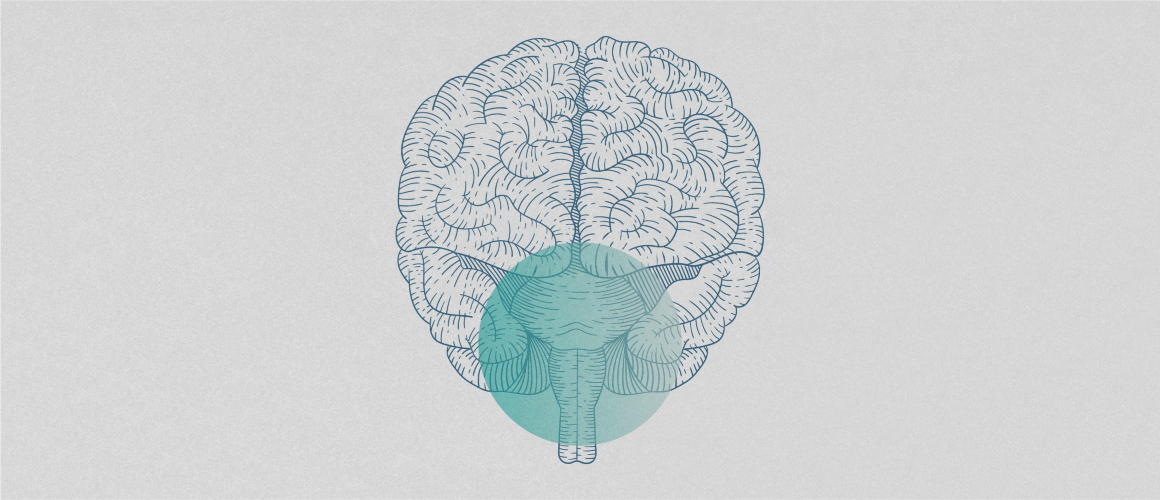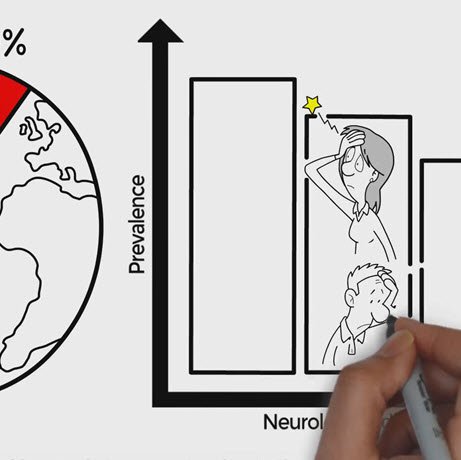
Updates on research in migraine pathophysiology: Oxytocin and inflammation
Supporting the advancement of basic science and clinical research has increasingly become a top priority in the headache field. At the virtual 14th European Headache Federation (EHF) Congress held 29 June – 2 July 2020, Dr. Kristian Haanes (Rigshospitalet, Glostrup, Denmark) and Ms. Fahimeh Martami (Tehran University of Medical Sciences, Tehran, Iran, on behalf of Professor Mansoureh Togha) presented posters on their latest research results addressing newly developing aspects of migraine pathophysiology.
A possible role for oxytocin in the trigeminal system
The hypothalamus is a key brain area that serves as a brain-hormonal interface,1 and recent imaging studies have implicated the hypothalamus as a potentially relevant locus to the beginning of migraine attacks.1 Oxytocin is a hormone localized in the magnocellular nuclei in the hypothalamus with analgesic effects.2 Although its role in headache is yet unclear, in vitro experiments have demonstrated that trigeminal ganglia neuron activity and calcitonin gene-related peptide (CGRP) release can be inhibited by oxytocin.2
Dr. Kristian Haanes and colleagues investigated whether oxytocin and the oxytocin receptor (OTR) were detectable in the trigeminal system, and whether they could modify the ganglion activity of CGRP. Immunocytochemistry in rat cells revealed that satellite glial cells surrounding neuronal cell bodies were consistently stained with anti-oxytocin antibodies, of which some were also stained with anti-OTR antibodies, suggesting co-localization in the trigeminal ganglion, according to Dr. Haanes. He reported that oxytocin did not significantly affect CGRP release from isolated trigeminal ganglia nor dura mater in rats when measured by enzyme-linked immunosorbent assays (ELISA). He also showed via arterial wire micrography that oxytocin contracted isolated segments of various rat arteries.
Dr. Haanes claimed that this is the first time that a rich distribution of the oxytocin system has been demonstrated in the trigeminal ganglia. He concluded that although many mechanistic questions remain, oxytocin may act in the trigeminal ganglia and affect pain transmission, which may help explain hormonal influences in migraine and offer novel targets for migraine treatment in the future.
Are inflammatory cytokines involved in migraine pathogenesis?
The role of inflammation and inflammatory markers or cytokines in migraine has been speculated, though evidence in humans is still scarce.3 Particularly, a numbers of studies have reported fluctuations or an increase in levels of proinflammatory markers C-reactive protein (CRP)4 and tumor necrosis factor (TNF)3 in relation to migraine attacks.
Prof. Togha and colleagues examined the serum levels of CRP and TNF-alpha among patients with episodic migraine (EM) or chronic migraine (CM), along with control subjects who were headache-free. In total, 43 patients with migraine and 40 control subjects were assessed. She found that patients with migraine had significantly higher serum levels of TNF-alpha compared to headache-free participants, while no such differences were seen for levels of CRP. She reported that significant differences were not observed between patients with EM and patients with CM in either CRP or TNF-alpha levels.
In a short accompanying presentation, Ms. Martami added that there were significantly higher odds—a more than two-fold likelihood—of developing migraine for those with higher TNF-alpha levels, after considering potential confounding variables. She remarked that their findings “support the hypothesis that the inflammatory state is related to migraine pathogenesis, and that this effect may be beyond migraine progression,” though larger and more detailed studies are necessary to make further progress in understanding mechanistic details.
Novel research continues to elucidate the unknowns around migraine pathophysiology
Many questions still remain on how the oxytocin system or inflammation can affect the onset of migraine attacks, and whether their pathophysiological roles in the context of migraine can lead to the development of effective treatment options—only further research will hold the key.
May A, Burstein R. Hypothalamic regulation of headache and migraine. Cephalalgia 2019;39(13):1710–9.
Tzabazis A, Kori S, Mechanic J, et al. Oxytocin and Migraine Headache. Headache 2017;57 Suppl 2:64–75.
Edvinsson L, Haanes KA, Warfvinge K. Does inflammation have a role in migraine? Nat Rev Neurol 2019;15(8):483–90.
Hagen K, Stovner LJ, Nilsen KB, Kristoffersen ES, Winsvold BS. The impact of C-reactive protein levels on headache frequency in the HUNT study 2006-2008. BMC Neurol 2019;19(1):229.



